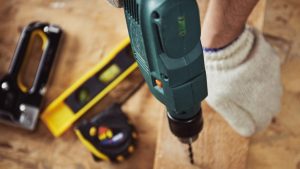It’s hard not to miss the bright yellow Ontario Ministry of Transportation van which periodically travels the length of provincial highways from mid-spring to late fall. Rather than the colour, however, the important point is what the vehicle and its operators are doing.
Developed by Mississauga, Ont.-based Fugro Roadware and now in its fourth generation, the Ministry’s Automated Road Analyser (ARAN) is a high speed vehicle with an array of highly sophisticated equipment which monitors pavement performance.
With the use of two dual high-definition overhead video cameras, a laser roughness subsystem, a distance measurement instrument, and a laser cracking measurement system, the vehicle’s two operators collect data on roughness, rutting, cracking, and texture.
The data is stored on three on-board computers — with back up hard drives — and later uploaded on to iVision, an internal web-based application system which can be accessed by Ministry officials anywhere in the province.
"It (the data) is integrated, objective, and timely," says senior pavement evaluation technician Jason Wade, and one of the van’s two operators. The other technician and operator is Ben Van Egmond.
"We’re data collectors and system operators," says Wade, explaining their responsibility is to collect the data. Any recommendations or decisions that may be needed to restore or replace defective pavement are made by other ministry offices.
Although their base of operations is a maintenance yard near MTO’s Downsview head office in north Toronto, they crisscross a large swath of the province from May 1 to Oct. 31, clocking in approximately 50,000 kilometres.
The routes are planned well in advance and the object is to aim for both good traffic and weather conditions. Key components of ARAN won’t perform if the van is moving too slowly and the video cameras won’t provide good images if it’s raining.
"We usually start in Windsor first because it’s warmer (than other parts of the province). In early July we head to Thunder Bay because it’s drier at that time."
Often using their cell phones to check weather networks, they stay on top of local conditions, especially when they’re hundreds of kilometres away from Toronto. Encountering rainy weather could result in a wasted trip and lost data, says Wade.
Before heading out the men test out ARAN’s various systems, such as its RoLine Laser system which is used to measure road roughness in a 100-mm-wide footprint. It’s a vast improvement over earlier ARAN versions where a single-point laser was used, he says.
A key piece of equipment is the Laser Crack Measurement System which determines crack, width, and depth. It was incorporated in 2011 as part of a major enhancement of ARAN.
At the heart of the operation, though, is the "humble" the distance measurement instrument.
"We have to be moving for it to work," says Wade, reiterating the point that ARAN is a distance-based system and won’t function if the van isn’t moving.
As part of the pre-drive planning, Van Egmond uploads the coordinates of the pavement sections which are to be collected that day. Once the van is on the road he constantly monitors a computer screen with an indicator which counts down the kilometres to the next section. Even so, he is always on the lookout for visible landmarks to start that section.
"The start of a new segment is the centre lane of the two highways (east-west, north-south)," says Wade, who does the driving.
Varying in length from 10 kilometres in southern Ontario to 20 kilometres in Northern Ontario, the segments are based — more or less — on the original construction or rehabilitation projects carried out on those sections, he explains.
On divided highways with multiple lanes, such as the Highway 400 series, the van stays in Lane Two to ensure accurate and consistent results. (The ministry counts lanes from the inside to the outside.) Of course, that isn’t always possible, especially when they have to exit on to another highway, says Wade.
At the end of the day, the hard drives from the three computers are physically removed and the data is entered into a local server at the Downsview office. Data from each pavement section is specifically entered into the same section category on the server.
This process is known as "segmentation" and is performed by a university co-op student. Currently, that role is being carried out by Mohawk College computer engineering technology student Julie Looy
But that’s not the end of the production. On a periodic basis the Ministry’s information department will move the information from the server to iVision, explains Wade.
Besides reducing potential safety hazards of physical on site road inspection — and replacing the voluminous paper manuals inherent with those inspections — ARAN offers other benefits, says Becca Lane, manager of MTO’s materials, engineering and research office.
"Automated collection of pavement distresses through 3D laser scanning allows the ministry to move from subjective to objective pavement management across the provincial highway network. This allows us to assess performance across the network in a quantifiable and repeatable fashion."
It also allows the ministry to better redirect resources to address specific pavement issues and needs, says Lane.










Recent Comments
comments for this post are closed